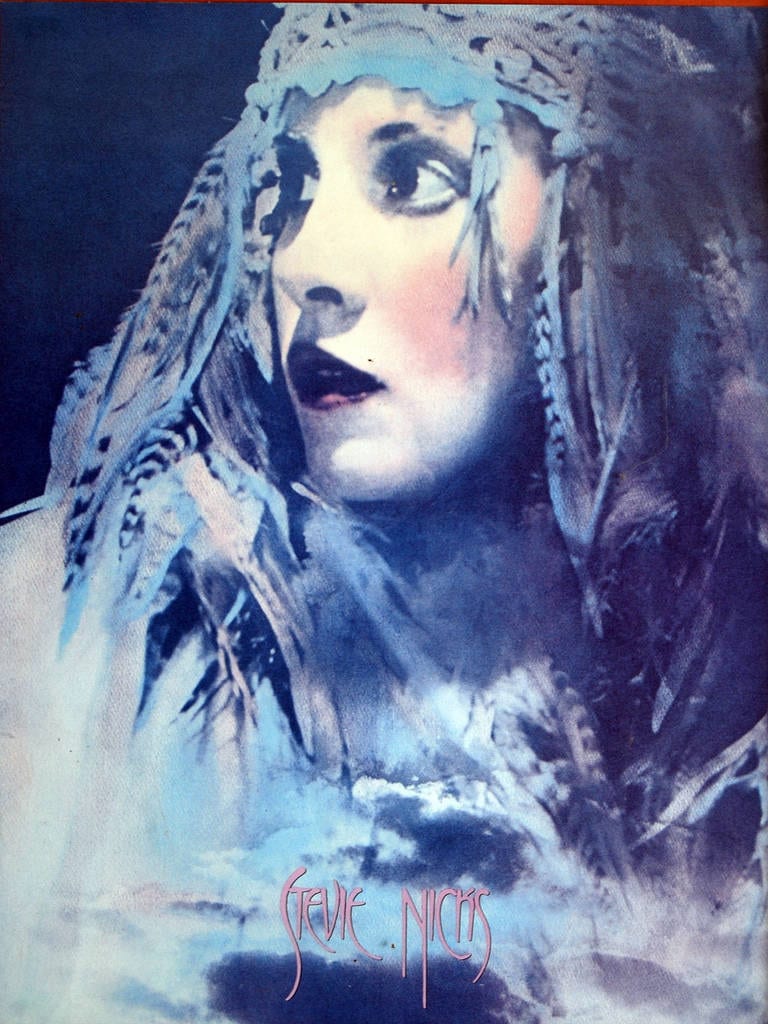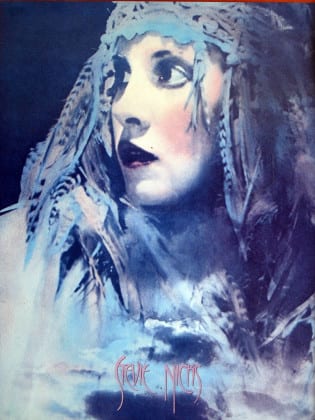Perhaps the concept of a singer as a musical heroine is a product of nearly a century of the American-British pop music movement just as much as it was an element of European opera. It has been cultivated in various ways.

There was Tori Amos, whose persona was (and is) an artistic and intellectual survivor, a half-psychotic femme fatale with an axe to grind against the homicidal patriarchy. Her predecessor, Kate Bush, was more of a fairytale come to life—like a dancing, singing pixie. Of course, Madonna (and to a lesser extent Paula Abdul) rose to power during the MTV and VH1 heyday, pushing lord-knows-how-many young men into early puberty with her carnal videos. At the top of the tower resides the great Bjork, a living goddess who has been pushing every boundary even before her solo debut, “Debut,” when she was screaming and writing with The Sugarcubes. Lady Gaga tried unsuccessfully to become the new David Bowie, and while her visual team had the chops, she never had the talent to even approach that goal. But she did succeed in creating a persona.

Colby Gutierrez-Kraybill / CC BY 2.0
Enter Lana Del Rey, who mixes the blasé nonchalance of Mazzy Star’s Hope Sandoval with Stevie Nicks‘ sultry husk. There is a drugged noir tinge of a French black-and-white film to everything she does. But rather than seeming like a one-trick pony, she has rather refined her own fatalistic love-struck persona into something that is ripening with each album. Treading in the wake of Suzanne Sundfor’s dazzling 2015 epic “Ten Love Songs,” “Honeymoon” is a future classic: it delivers all the darkness and nostalgia of the raw “Ultraviolence” with even more depth and maturity—and of course, tons of reverb.
Representing some of her best work to date, “Honeymoon” opens ethereally with strings, and she further sets the tone of the album with the opening line, “We both know / It’s not fashionable to love me.” Harmonizing in three parts with herself, she mournfully slides through a nihilistic love song to “Mr. born to lose.” The string arrangement is perfect, appropriately drifting away on a minor ninth chord. “Honeymoon” would’ve been the perfect ending theme to Carlo Carlei’s remake of “Romeo and Juliet.”

“Music To Watch Boys To” evokes the “eternal youth” vibe that permeates so much of her work. It picks up a little—about as much as anything on “Honeymoon” does. It also whispers hints of misogyny, like No Doubt’s “Just a Girl” Or Garbage’s “Stupid Girl,” except Del Rey seems to be sincere in her self-effacing dependency, quoting Robert Frost and referring to PBRs on ice in the summer. There’s a hidden fang underneath the casual delivery, visible momentarily in lines like “It’s all a game to me anyway” and “No holds barred / I’ve been sent to destroy, yeah.”
In “Terrence Loves You,” Del Rey switches from her lower, breathier register to her florid upper range with its delicate, fluttering vibrato, quoting David Bowie’s “Space Oddity” and talking about still getting “trashed” when she hears someone’s tunes: “But I still got jazz when I’ve got those blues.” Did someone throw away her Bowie albums? “God Knows I Tried” remains in the same vein, this time referencing the Eagles.

“High By The Beach” moves slightly away from the baroque approach of the first four songs. For some reason, she felt compelled to give it a rather bland hip-hop drum ‘n’ bass treatment. The result is somewhat like biting into a rock in your soup, eliciting a reaction of “Ew, what is that doing there?”
“Freak” is treated similarly. But it’s so slow—it’s really slow—that the trunk-thumping accompaniment almost feels like genre fusion rather than genre-hopping. And “Art Deco” remains in that blurry, dizzily lethargic tempo range but incorporates acoustic drums rather than those boomy synth bass drums, giving it a grittier feel.
While it’s only a poem recited over music rather than a song, “Burnt Norton” is absolutely one of the best tracks. Lush and dreamlike, it mixes the brilliant visual aesthetic of “What Dreams May Come” with the aquarelle hypnosis of Smashing Pumpkins’ “Spaced.”

“Religion” is a camphoraceous hymn to some lover. Del Rey professes that “It never was about the money or the drugs” and cries “Hallelujah, I need your love.” Again, the Stygian production mixed weeping strings, tremolo guitar, and a funereal drum track to cavernous effect.
A flute riff—one of the few bright moments in “Honeymoon”—opens “Salvatore,” which is colored with Italian verbiage, sex in the rain, ice cream, and a reference to Tangerine Dream. She even slips in the luxuriant famous saxophone melody from George Michael’s “Never Gonna Dance Again.” “The Blackest Day” is concolorously somber, but she does catch the ear vocally, crawling about in the velvety lower end at one point, then leaping by octaves. She gives a nod to Billie Holiday and recites volumes of text about a breakup of seemingly apocalyptic proportions.

Elliot James / CC BY 2.0
Spiced with maracas and horn flourishes, “24” returns to the cinematic territory of “Honeymoon.” She mimics Fiona Apple with low hums and Tori Amos with high “ahhs.” Again, the tremolo guitar and vibraphone, the symphonic orchestration, and the subversive subtext of a cheating lover mix to create a diurnal dirge that would be an appropriate theme song for any spy movie. One can almost see a tuxedoed Roger Moore, waiting in the wings with a handgun, in lines like “There’s only 24 hours / And that’s not enough / To lie like you lie or / Love like you love.” A harmonic minor ninth chord signals the end of a romantic imbroglio with a successful assassination.
“Swan Song” follows suit, now with a theme of escapism more fitting perhaps for “Kill Bill 2”: “I will never sing again / With just one wave it goes away / It will be our swan song.” Strangely—then again, the entire album is strange—Del Ray leaves with a cover of The Animals’ “Don’t Let Me Be Misunderstood.” Her version might actually be better than the original, and the topic fits the rest of the album. But it certainly ends “Honeymoon” with a whimper rather than a bang, which is appropriate.
With “Honeymoon,” Lana Del Rey doesn’t so much take listeners on a magic carpet ride or a roller coaster so much as she simply buries them alive. “Honeymoon” is the musical equivalent of being bitten by a vampire. Turn off the lights, light a few candles, put on “Honeymoon,” and cry yourself to sleep.












